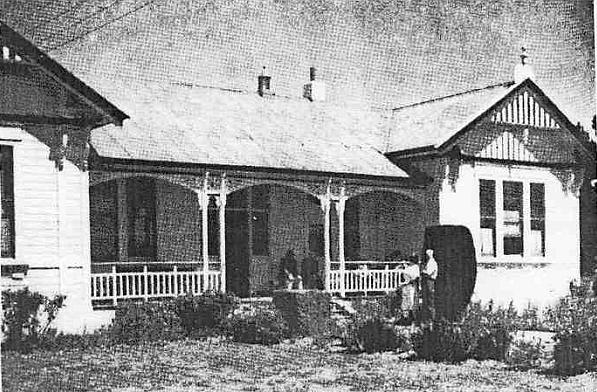|
Carterton Mens Home, Carterton
Built in 1900, the Carter Home was owned by a charitable trust created from funds granted by the will of Charles Rooking Carter, a prominent philanthropist, large landowner, the 'father' of Carterton. The Home thus was not controlled by a Charitable Aid Board or a church, but by a local committee, under terms laid down in a special provision in Carter's will of 1896. Life in the Carter Home did not bear the slightest resemblance to the institutionalised care of the elderly poor described in Tennant's searing account. This does not mean that her account is wrong; it suggests that the Carter Home was perhaps an exceptional place. This may have been because it was well funded; its management was enlightened and devoted; it did not have the pressures of caring for the bedridden (the senile being sent elsewhere); and it had fairly rigorous entry restrictions. (Joseph Stevens and his wife Annie were appointed custodian and matron when the Carter home first opened until 1913 - Source g-g-grand-daughter Ann.) Unlike Charitable Aid homes, it was not a state institution
and hence could not be used by magistrates as a dumping ground for
decrepit vagrants and troublemakers. The Home contained no more than thirteen inmates, usually fewer. With its generous endowment, it was able to give its charges a comparatively high standard of comfort. The food was good. Report 1918: "For Christmas dinner there was roast turkey with seasoning, young potatoes, greens, mince pies, apples, oranges, dates, raisins, two or three kinds of biscuits, and a bottle of ginger ale. The Home had enough rental income from its £2,500 endowment to employ a staff of four (the caretaker/manager and his wife, a cook and a groundsman/handyman); to provide basic clothing for the inmates; to pay for all their medical care (there was no stinting on doctors' visits when the men were ill); and to replace the wagon with a motor car, which took groups of inmates for joy rides, on outings to the Carterton shops, to rugby matches, and to the annual A&P shows in Carterton and Masterton. The institution was obviously not stigmatised locally. Groups of volunteers periodically visited and put on evening entertainments for the men; and the proprietors of Kings, the Carterton movie house, often gave them free seats for Saturday matinee performances. If there were rules about the comings and goings of the inmates, these did not affect Cox for he seems to have had complete freedom of movement. The establishment was on the rural outskirts of Carterton, within walking distance of the town and its amenities. From Cox's description, all the men slept in a dormitory except the sick, who were temporarily removed to a private room. Although the dormitory deprived them of privacy, this was one of the few inconveniences of living in the Home. The men were expected to do a few chores around the place, but as the 'boss' (the caretaker/manager) explained to Cox, these could be done 'at his leisure'. The men were at liberty to bring alcohol into the home; occasionally one of them would come back drunk in the evening but apparently nothing was said. There was no 'refractory ward' for the unruly since severe discipline was very rarely needed. During the whole of the seven-year period Cox lived at Carter's, only one resident was ever expelled for 'insolence and insubordination'.
|




